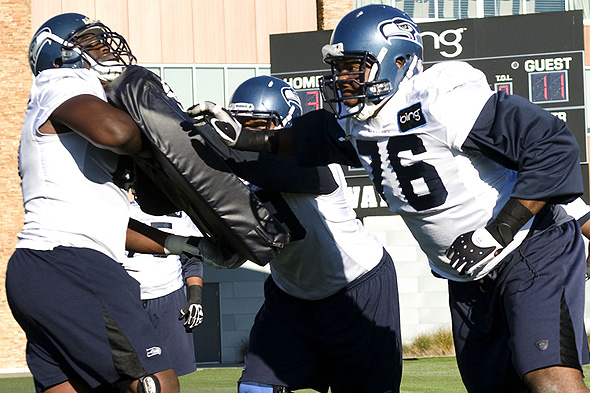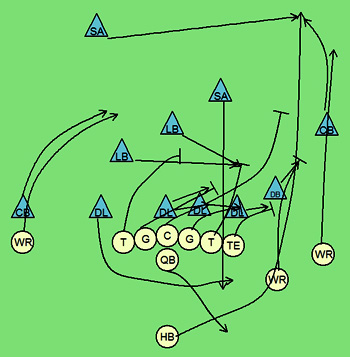
The stretch play is a way to use tandem blocking and running back speed in ways that make life very hard for defenses. All zone-blocking teams (including the Seahawks) have it in common, and even teams that dont employ zone as a major part of their blocking philosophy will generally use versions of this idea (imagine bigger linemen sliding in unison, and a halfback looking for gaps behind them) without the more advanced area-blocking involved.
Former Seahawks offensive line coach Howard Mudd we know him as the man who made sure Walter Jones came to the Emerald City made this play the staple of the Indianapolis Colts running game through the last decade. You will see different variants of it per team and against different defensive fronts, but the basic idea is always the same — to push defensive fronts into fits that they dont want to use. The Chiefs did that to the Seahawks to the tune of 270 total rushing yards, and 173 from halfback Jamaal Charles alone.
After the 42-24 beatdown was done, Seahawks coach Pete Carroll explained why Kansas Citys rushing offense, which is the NFLs best this season, is so tough to stop. Theyre a very fast team, and he makes them a very fast team, Carroll said. (Charles is) a very dangerous player; he just runs around you. Hes done it to everybody in the league, all season long. We tried hard to keep the edges you saw us string things to the sidelines, and knock things out of bounds like we wanted to, but not enough times. If you make a mistake and duck your head inside, he gets around the edge and turns it upfield.
This is kind of their bread and butter, and they feed off that, and their play passes come out of that. But its really just about dealing with speed, and theyre a nice club (with their) blocking. They do a nice job on the edges the tight ends did a nice job, and the tackles had a good day against us, too.
Charles first run from scrimmage against the Seahawks (Fig. 1) was as well-coordinated and effective version of the stretch play as you will see. With 9:40 left in the first quarter, the Chiefs took the ball with first-and-10 at their own 38-yard line. Ill have to apologize in advance that the play diagram looks like a road map of Downtown Tokyo, but as with most successful zone running plays, theres a lot going on here.
Zone blocking is also referred to as area blocking, and you can see that in the assignments. Instead of sliding to the right in a big sludge, everyone has a specific area to cover, and the Chiefs did it all in textbook fashion.

The first playside block comes from the inside receiver, who blocks nickel back Jordan Babineaux out to the sideline. The tight end then takes left defensive end Raheem Brock out of his area, and the right tackle moves up the right side to deal with middle linebacker Lofa Tatupu. The right guard pushes lineman Jay Richardson (who is playing the three-technique in this case) to the offensive right side, and the center takes out weakside linebacker Will Herring. The left guard deals with nose tackle Brandon Mebane after the center chips off Mebane to head upfield, and because right defensive end Chris Clemons is pursuing the pass, the left tackle can ignore him and head upfield as well. Lawyer Milloy pursues outside the right C-gap (between the tackle and tight end), effectively taking himself out of the play.
Charles takes the stretch (elongated to the right side) handoff from quarterback Matt Cassel, and hes off to the races in the gap opened up between Babineaux and Brock. Herring and Babineaux eventually recover to set after Charles, along with Marcus Trufant and free safety Earl Thomas, who comes over from deep weak side to make the tackle 27 yards downfield.
On this particular play, the Seahawks presented some pre-snap movement, but none of the inline creativity that might counteract the stretch play — the twists and stunts (terms well detail in future articles) that might have made a difference against most offenses was rendered irrelevant by the seamless combination of Charles breakaway speed and Kansas Citys airtight blocking.
